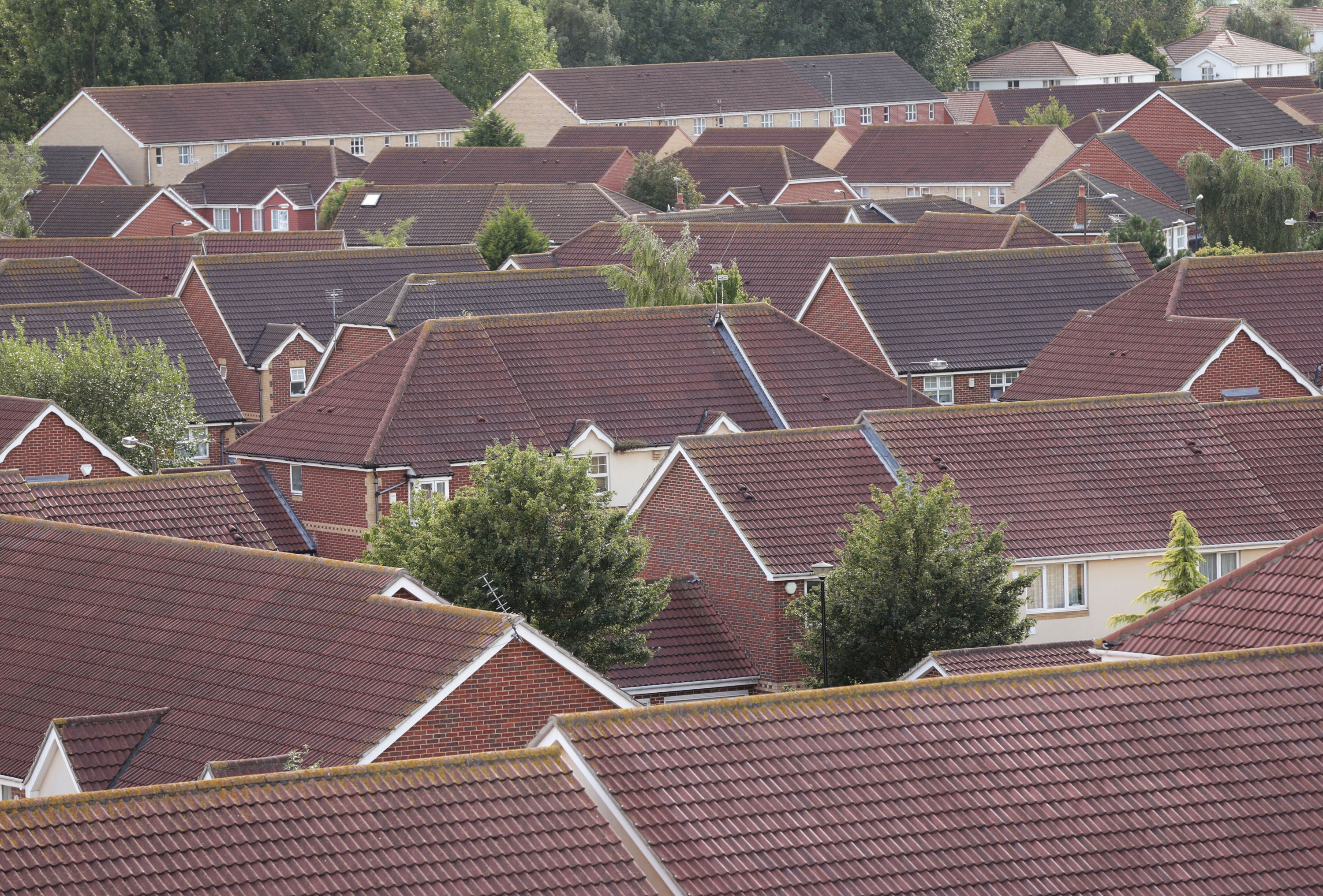Number of home-buyer mortgage approvals slumps to one-year low
The fall in July followed the ending of the full stamp duty holiday.

The number of mortgages approved for home-buyers slumped to the lowest level in a year just after the full stamp duty holiday ended, Bank of England figures show.
Some 75,200 loans were approved for house purchase in July, down from 80,300 in June, when the full stamp duty savings that buyers were able to make under the holiday ended.
The Bank said the July total was the lowest since the same month in 2020, but remained above pre-February 2020 levels.
People also made net mortgage debt repayments totalling £1.4 billion in July.
Net repayments are relatively rare, with only one other repayment (in April 2020) made in the past decade, the Bank’s Money and Credit Report said.
Once the stamp duty holiday has ended, the EY Item Club expects demand to soften and that there will be a modest correction in prices
The net repayment in July followed record borrowing of £17.7 billion in June, which the report said was probably boosted by the initial tapering off of the stamp duty holiday.
The “nil rate” stamp duty band in England and Northern Ireland halved from £500,000 to £250,000 from July 1, and will revert to its normal level of £125,000 from October 1.
Property professionals previously reported seeing a rush of buyers trying to complete deals earlier this summer, in order to maximise their stamp duty savings.
Commenting on the Bank’s figures, Martin Beck, senior economic advisor to the EY Item Club, said: “Net mortgage lending had risen to a record £17.7 billion in June, as buyers raced to complete purchases before the threshold for paying stamp duty fell from £500,000 to £250,000 at the end of that month.
“But with so many transactions being brought forward, home-owners repaid a net £1.4 billion of mortgage credit in July.”
He added: “We may see another increase in activity in the next couple of months, as buyers line up transactions before the stamp duty threshold returns to its normal level of £125,000 from October.
“But once the stamp duty holiday has ended, the EY Item Club expects demand to soften and that there will be a modest correction in prices.”
Tomer Aboody, director of property lender MT Finance, said: “The continued lack of (property) stock is the issue for many as we head into autumn.”
We remain concerned that as support measures come to a close in the autumn, financial pressures remain very real for many
Looking at non-mortgage borrowing, the Bank said that, overall, people borrowed no additional consumer credit in July.
This compares with an average of £1.2 billion of consumer credit borrowed, per month, in the two years to February 2020.
Within the July consumer credit total, people borrowed an additional £0.1 billion on forms of credit such as car dealership finance and personal loans. However, this was offset by net credit card repayments of £0.1 billion.
Richard Lane, director of external affairs at debt help charity StepChange said: “Today’s data from the Bank shows that, in July, consumer borrowing was equalled by repayment of debt.
“In aggregate this perhaps paints a reasonably reassuring, if cautious, picture of the state of household finances.
“However, it masks the fact that, for some people, borrowing isn’t a discretionary activity, it’s the only way they can afford to put food on the table and keep the lights on.
“Among our own clients, we continue to see that many of those coming to us are from over-represented groups that have been negatively affected by the pandemic. We remain concerned that, as support measures come to a close in the autumn, financial pressures remain very real for many.”
July was a miserable month for savers
And despite rock-bottom interest rates, households deposited an additional £7.1 billion with banks and building societies in July.
This is significantly lower than a peak of £27.4 billion deposited in May 2020. The level of deposits in July was nevertheless relatively strong, the report said.
The typical interest rate paid on people’s new deposits with banks edged down to 0.29% – marking a new low – the Bank said.
The typical rate on the outstanding stock of deposits also fell marginally to another new low, at 0.38%.
Sarah Coles, a personal finance analyst at Hargreaves Lansdown, said: “Unfortunately, when it comes to rates, July was a miserable month for savers.”
She added: “Banks jostling for position at the top of the market has eased the squeeze for those savers who are prepared to shop around.
“In the fixed-rate market, banks have been competing for the top spot, and rates have risen.
“It has opened up the gap between easy access and fixed rates so that we’re finally seeing more savers seriously consider tying their savings up for a better deal.”
Ms Coles continued: “Many of the best rates are from newer, smaller banks, who aren’t looking for enormous sums of cash from savers. It means many of these will be blink-and-you’ll-miss-them deals.”
Large businesses borrowed £4.5 billion from banks in July, while small and medium-sized businesses repaid £1.2 billion, the report added.
Bookmark popover
Removed from bookmarks